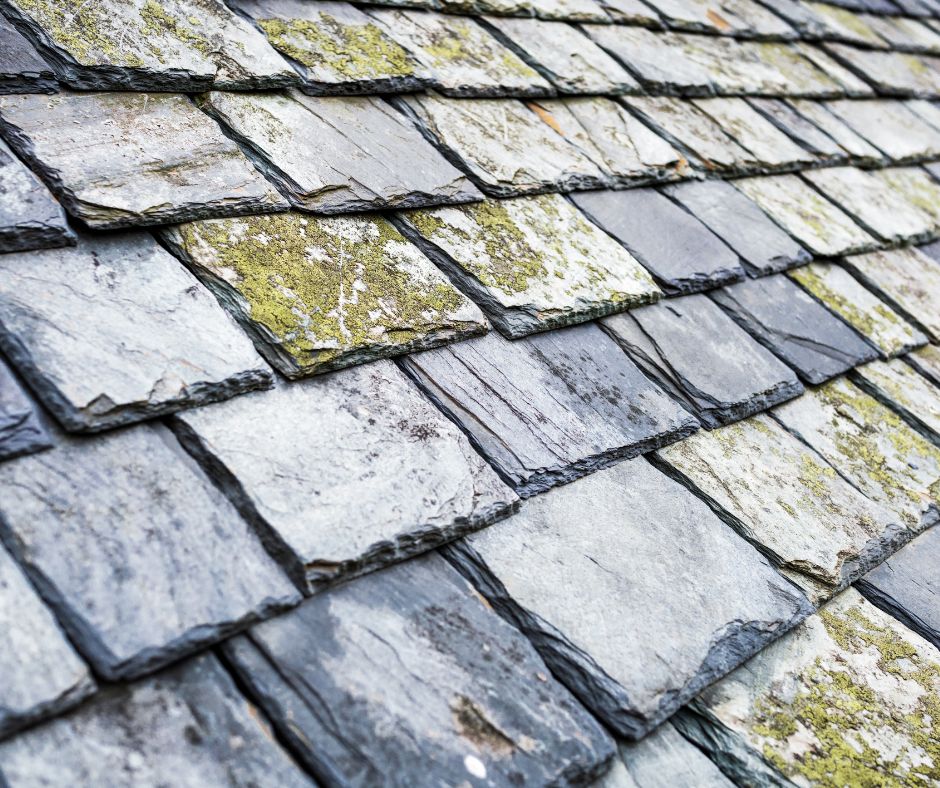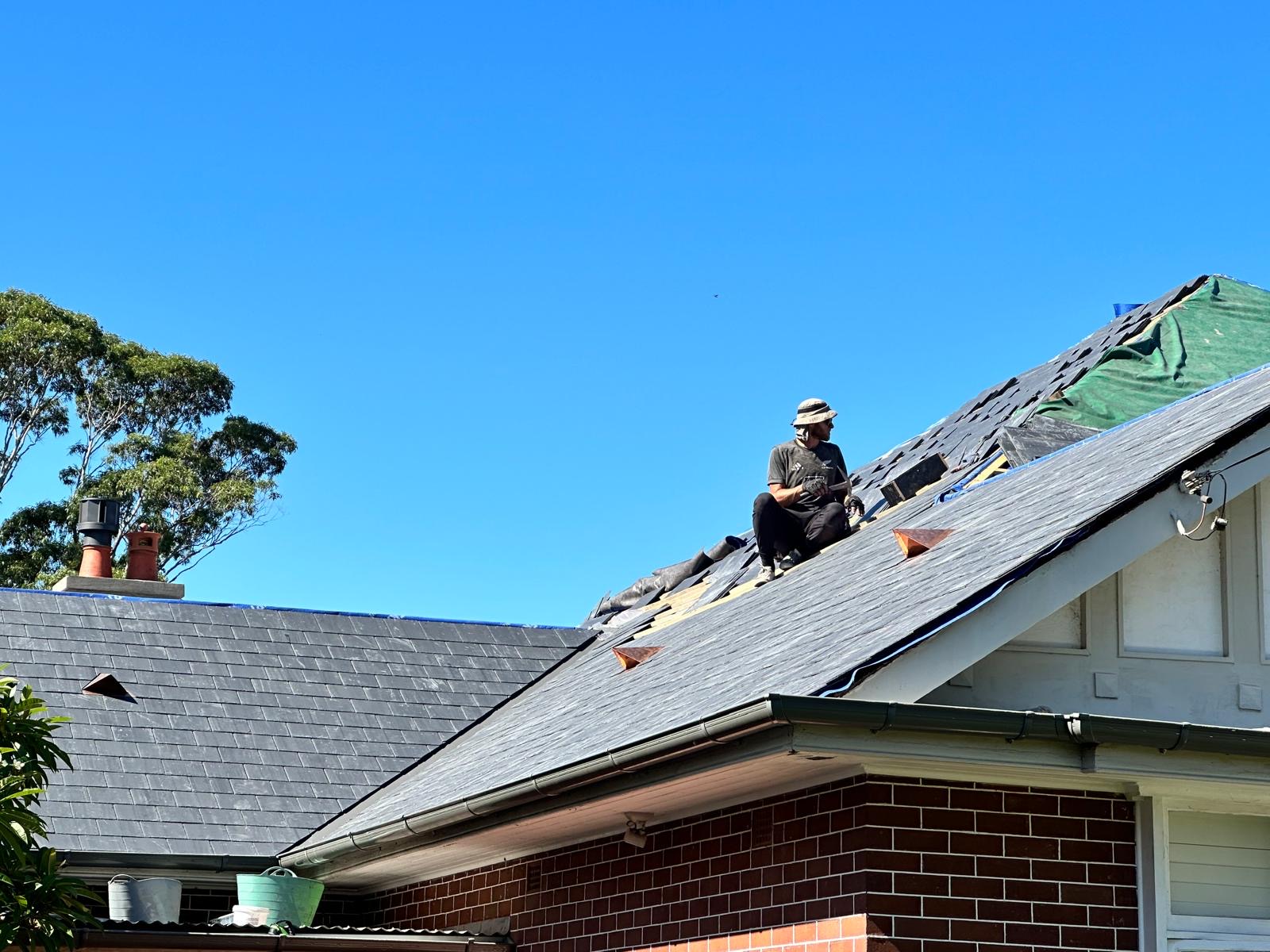Act Swiftly: Recognise the Essential Signs of Slate Roof Damage
If you observe indications such as tiles that have slipped or broken, distinct water stains on your ceilings, compromised flashing, cracked ridge mortar, or a build-up of slate debris in your gutters, then your slate roof may be in urgent need of repairs. Other concerning indicators include visible sagging, unexpected leaks following rainfall, or signs of water damage near chimneys and roof valleys. To avert potentially expensive structural damage and to safeguard your investment in your roof, it is crucial to schedule regular roof inspections. Detecting these issues early can save you from incurring extensive repair costs in the future.

Understand the Impact of Water Damage Caused by a Leaking Roof
Numerous homeowners remain unaware of issues concerning their slate roofs until they spot unsightly water stains on ceilings or water marks on walls. Although slate roofs are celebrated for their remarkable durability and longevity, they are not immune to wear and tear over the years. Elements such as nails may become rusted, flashing may lift, and a few tiles may shift enough to permit water intrusion. Surprisingly, a persistent minor leak, rather than a significant storm, can lead to considerable damage, which gradually worsens if left unaddressed.
Recognising early warning signs can help you avoid facing a much larger repair bill in the future. Below are essential indicators that suggest your slate roof requires professional assessment and repair.
1. Identifying Water Marks on Ceilings as Critical Warning Signals
The emergence of a yellow-brown ring on your ceiling is not merely a stain; it serves as a vital warning signal. Water has the ability to travel through internal structures for several metres before dripping onto a ceiling area. By the time you notice it, the leak has typically been active for an extensive period. Generally, water infiltrates at roof joins or near gutter installations, with the marks often manifesting in cornice areas, near chimneys, or beneath roof valleys. It’s imperative to take ceiling stains seriously.
2. Recognising Shifting or Uneven Slate Tiles as Alarming Indicators
Slate tiles are usually installed in tight rows, and if even one tile begins to shift or dip, it frequently suggests that the underlying nail has failed. If several tiles exhibit this issue, it may indicate that the battens or underlay have been compromised. While a couple of loose tiles may be a simple fix, a larger area of displaced tiles is a clear sign that your roof needs urgent attention to prevent further damage.
3. Finding Slate Fragments in Gutters or on the Ground as an Urgent Warning
If you discover fragments of slate scattered in your gutters or, worse yet, on the ground following wind or rain, it typically signifies that the tiles are cracking or crumbling. This deterioration can occur due to age, impact, or loose fixings. This issue is one of the earliest signs indicating that your roof requires inspection and potential repairs, even if it appears visually acceptable from the street.
4. Assessing Warped, Lifted, or Rusted Flashings for Possible Water Ingress Points
Lead flashing is specifically designed to safeguard vital joints around chimneys, skylights, and roof valleys. If the flashing becomes cracked, lifted, or begins to corrode, it creates an entry point for water. While this type of damage may be difficult to detect from the ground, it is often quite noticeable from the rooftop. If your roof is older than 20 years and the flashing hasn’t been replaced, it may be time for an upgrade to avert further complications.
5. Addressing Cracked Mortar Along the Ridge or Gables to Prevent Major Issues
Cracked or loose ridge capping is a common concern with older roofs. Natural elements such as rain, wind, and sun gradually deteriorate the mortar over time. If this issue is not promptly addressed, it can lead to water seeping beneath the tiles. Typically, this problem can be resolved with a straightforward repair rather than necessitating a complete re-roofing, provided it is identified promptly.
6. Listening for Unusual Ticking or Dripping Sounds After Heavy Rain as a Sign of Trouble
This may sound odd, but one of the initial signs of a leaking slate roof is the sounds it generates. If you hear ticking, dripping, or the sound of water trickling down inside walls after a storm, this should raise immediate alarm bells. It suggests that water is moving within the structure, signalling the need for professional intervention before the next rainfall exacerbates the situation.
7. Evaluating Recent Roofing Work for Possible Damage to Slate Tiles
It is more common than you might imagine to encounter issues following recent roofing work. Scaffolding from other trades, solar panel installations, or gutter repairs can inadvertently cause damage to slate tiles. Even walking across a slate roof without proper awareness of foot placement can lead to cracking or dislodging tiles. If you have noticed any alterations following roofing work, it is advisable to have it inspected to ensure the integrity of your roof.

Take Proactive Steps: Schedule Your Roof Inspection Today
If any of these signs resonate with you, the next crucial step is to arrange for a thorough inspection. A qualified roofer with expertise in slate roofing can effectively distinguish between normal ageing and issues that require immediate repair.
A comprehensive inspection involves more than just a cursory look; it requires a detailed examination of the condition of the battens, sarking, flashing, and the roof’s ventilation systems. In some instances, a few tiles may need replacement, while other cases may necessitate more extensive repairs. The key lies in being proactive and identifying potential problems before water damage has the chance to escalate.
Contact us today for a complimentary roofing quote and take the vital first step towards safeguarding your home from potential damage.
The Article: Slate Roof Repair: Signs You Need to Act Now first appeared on https://writebuff.com
The Article Slate Roof Repair: Urgent Signs You Shouldn’t Ignore Was Found On https://limitsofstrategy.com

